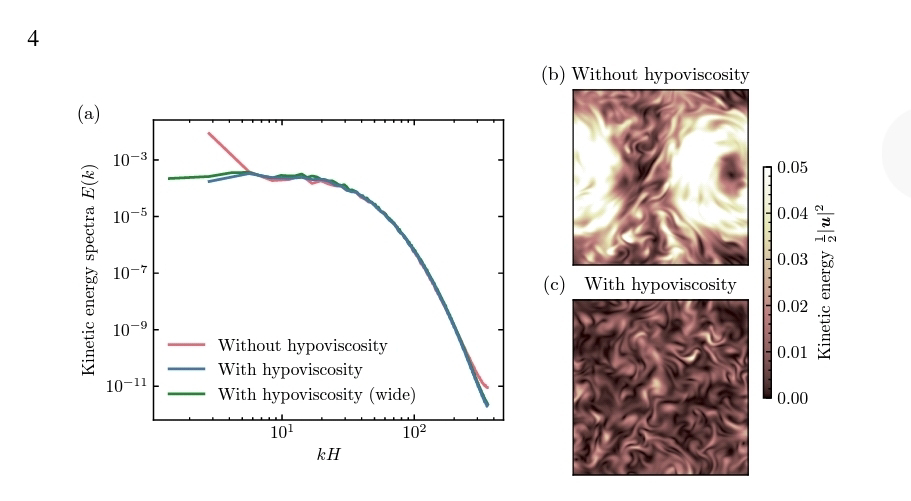<< Turbulent convection under strong rotation can develop an inverse cascade of kinetic energy from smaller to larger scales. In the absence of an effective dissipation mechanism at the large scales, this leads to the pile-up of kinetic energy at the largest available scale, yielding a system-wide large-scale vortex (LSV). Earlier works have shown that the transition into this state is abrupt and discontinuous. >>
Here, AA << study the transition to the inverse cascade in the case where the inverse energy flux is dissipated before it reaches the system scale, suppressing the LSV formation. (They) demonstrate how this can be achieved in direct numerical simulations by using an adapted form of hypoviscosity on the horizontal manifold. (They) find that in the absence of the LSV, the transition to the inverse cascade becomes continuous. This shows that it is the interaction between the LSV and the background turbulence that is responsible for the observed discontinuity. >>
AA << furthermore show that the inverse cascade in absence of the LSV has a more local signature compared to the case with LSV. >>️
Xander M. de Wit. Transition to inverse cascade in turbulent rotating convection in absence of the large-scale vortex. arXiv: 2502.16275v1 [physics.flu-dyn]. Feb 22, 2025.
Also: turbulence, dissipation, transition, vortex, in https://www.inkgmr.net/kwrds.html
Keywords: gst, turbulence, dissipation, transitions, vortices


